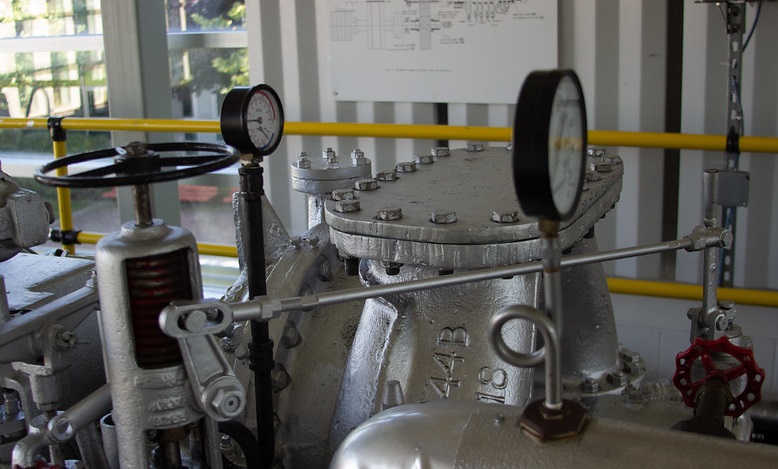
Middle school and high school students have emailed questions about the training that cadets majoring in Marine Engineering receive on the campus of Massachusetts Maritime Academy.
Several classes have asked:
What is the first engineering course for cadets majoring in Marine Engineering?
One student wanted to know:
How do cadets already know how to run the TS Kennedy when they board the ship?
Here's how the training begins.
Engineering Systems & Safety is taken by all 4/C cadets majoring in Marine Engineering, Marine Transportation, and Facilities Engineering. In this course, cadets are introduced to the fundamental engineering concepts related to the steam and water cycle and steam generation. They also learn about various primary and auxiliary engineering systems. In the lab portion of the class, cadets become familiar with the safe operation of the Engine Room and the engineering systems aboard the TS Kennedy. Because safety is the #1 priority both on campus and at sea, cadets are introduced to basic first aid occupational safety certification.
4/C cadets are excited to build on this foundation during Sea Term 2023.

We invited three cadets to talk about Engineering Systems & Safety Here's what they had to say...
“One thing that I have learned from the class Engineering Systems and Safety has stuck with me. LT Dannessa has me that the steam cycle is split into 2 sections. One that turns the seawater into steam, and the other turns it back into feedwater, which goes back into seawater. This has helped me know what each part is doing in the steam cycle more in depth. One challenge included learning in the classroom, without being able to visually see it.” – 3/C James Curtis (MTRA - Westminster, MA)
“I have very much enjoyed the introduction process to power generation. Learning how a steam boiler really works is fascinating. But breaking down such a complex system piece by piece gives you such a good baseline understanding to then build off as we move further into the engineering program, which is something I am very much looking forward to. I will definitely be using the line tracing skills learned in lab to be able to follow different pipes or lines in the Engine Room.”
-3/C Alex Fledderjohn (MENG – San Diego, CA)
“The course Engineering Systems & Safety, (what we call ESS) is a freshman's first introduction to the Marine Engineering curriculum. 4/C Marine Transportation majors also take this course because freshman Sea Term is split in half on the deck and engine side.
In ESS we learned the basics of the steam cycle and how steamships operate. Also, the course does cover 2 and 4-stroke engines, which are seen in most ships built today. Another thing the course focuses on is safety in the Engine Room. A cadet needs to know about all the hazards around them and how to respond in the event of a casualty in the Engine Room. Some of the challenges with ESS are the understanding of systems and memorization. You will also learn conversions and units so you will need basic math skills.
The moment you enter the Engine Room on Sea Term you will immediately be using what you have learned in ESS, from the steam cycle to the safety in the Engine Room.
– 3/C McArthur Dannelly (MENG – Annapolis, MD)
“I have always been fascinated with how things work, and how to rebuild broken parts, Massachusetts Maritime Academy is a perfect place for me to learn hands-on instead of in a classroom. My favorite class would be the engineering labs because its hands-on learning and you can get a lot of information out of it.”
- Izabella Mackintosh (MENG - Plymouth, MA)
Do you enjoy hands-on learning?
Take a brief tour of Massachusetts Maritime Academy's Bresnahan Hall. This is where hands-on engineering labs are located on campus.